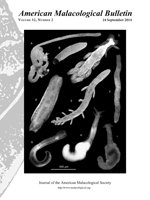Hydrothermal vents in the deep sea are harsh, temporally unpredictable habitats with what appears to be a distinct fauna. Decades of subsea research with crewed and remote vehicles have generated a list of known species; is the species list complete? Evidence derived from mollusks sampled at hydrothermal vents on the East Pacific Rise (EPR), and Gorda and Juan de Fuca ridges suggests that the answer is yes. A 2006 compilation of hydrothermal vent species based on decades of research is updated and compared to specimens from these three active ridges in collections of the Field Museum of Natural History (FMNH) that resulted from limited collecting activity. Only three dives at each of the two Gorda Ridge vents collected all named species; 90% of the 20 species known from Juan de Fuca Ridge were collected in nine cruises. At the EPR, only 81% of the 43 known species were collected, but differences among the ridges were not significant. The limited FMNH collections increased the known ranges of six species from Juan de Fuca to Gorda Ridge and of nine species on the EPR. In addition, the EPR appears to host more rare species, potentially due to the frequent temporal changes at these vents. Mollusks currently known from each ridge, with their expanded ranges, are listed; the implications of these results for recent discoveries of slow-spreading vent fields are discussed.
How to translate text using browser tools
1 September 2014
Molluscan Species Diversity at North Pacific Hydrothermal Vents: What We Know and What it May Mean
Janet R. Voight
ACCESS THE FULL ARTICLE
clam bed
collections
East Pacific Rise
Gorda Ridge
Juan de Fuca Ridge





